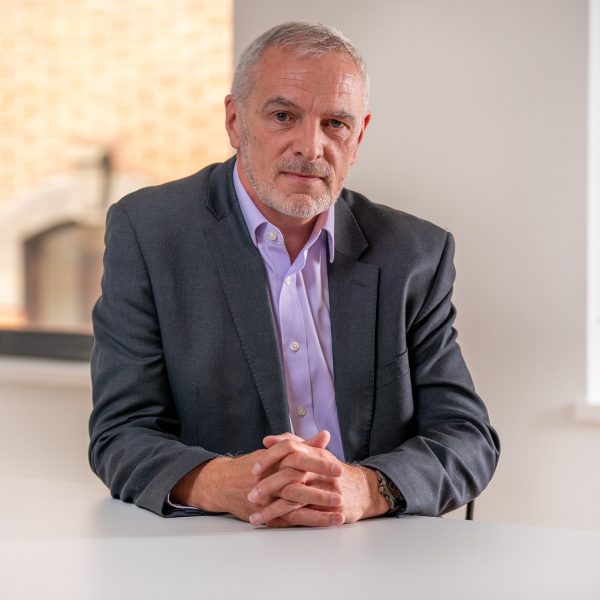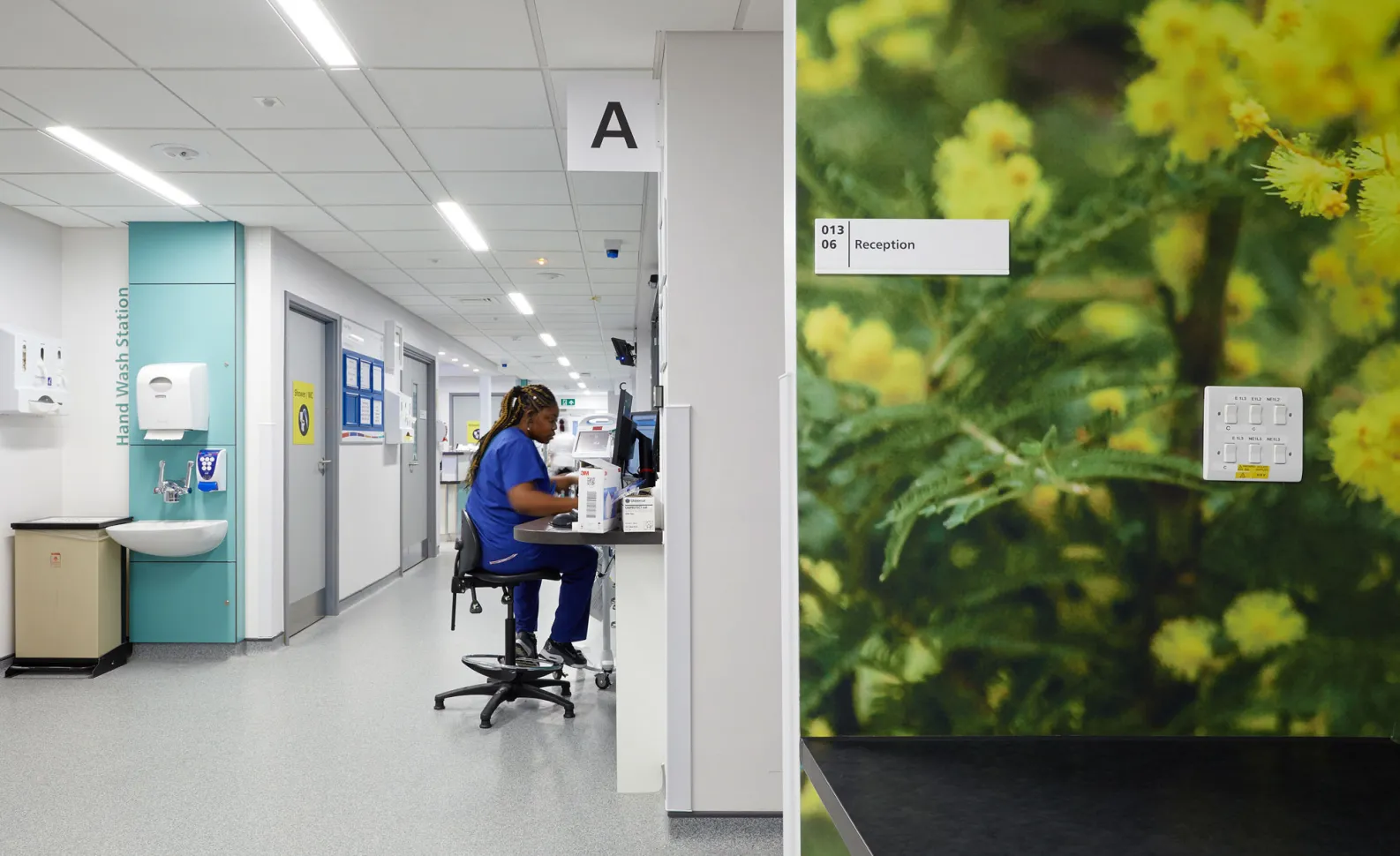Insight
Rationalising the NHS estate: more than just buildings
10 Oct 2023

Mark Dando
Director
With the NHS accounting for more than 40% of all public sector emissions every year, the role it has to play in the UK’s journey to net zero is clearly a large one. This month, the NHS’s new Net Zero Building Standard comes into play, but helping the healthcare service hit its goals is about much more than just building fabric. Wider strategies that improve overall utilisation is needed, as Mark Dando, director of cost management at multidisciplinary consultancy Pick Everard, discusses.
The new Net Zero Building Standard will apply to all buildings works and upgrades moving forward. It means that NHS trusts will need to submit reports on net zero design, operational energy and carbon, and a whole-life carbon assessment when redeveloping buildings to make sure they meet the new standard. This is all to support the NHS’s aims to reach net zero by 2040, including an 80% reduction by 2028 to 2032 for the emissions it controls directly.
Buildings and related facilities are responsible for around 15% of the NHS's annual emissions, which shows that the journey is about more than simply physical structures. The biggest challenge can't be solved by just building new hospitals; we also need to make better use of what we already have.
Beyond the actual structures, achieving sustainability goals includes infrastructure, medical equipment, and all other factors that affect how well the healthcare system functions as a whole. To overcome numerous obstacles, adjust to new pressures and population expansion, and discover new applications for technology, careful planning is essential.
Understanding the landscape for efficiency
The starting point is understanding what is needed across the estate, including what construction work will be required, and what backlog maintenance work is needed to make that happen. The challenge here is that NHS estates contain a huge amount of property, and to add further complication a lot can be leased out.
There will be a range of building uses, including those for communal spaces, administrative functions, and primary and emergency care. Bulldozing everything down and starting again is not an option. We must look into how to rationalise and implement efficiencies that boost utilisation.
For instance, there will be room that can be made available or structures that can be removed. In an effort to increase overall utilisation, services may be combined here that were previously more dispersed. Flexibility also needs to be introduced, moving away from the firmly fixed approach we’re used to – very similar to what is happening in other sectors like commercial workspaces, which is improving utilisation.
Is there opportunity to bring services together across different regions to improve overall efficiencies? Could it seek to streamline service delivery, rather than risk doubling up and therefore reduce effectiveness, while increasing emissions?
With the consolidation of Manchester hospitals into a single united trust, we have already witnessed this. This appears to have been effective in moving projects forward and bringing in financing sources. There are challenges with this cross-area approach, namely with the huge number of stakeholders involved, but there is great opportunity to create services and work better across cities and regions by sharing resources and approaches.
Collaboration would be essential, and experts like us would advise the main representatives from various trusts to examine opportunities to pool resources with the primary goal of enhancing patient outcomes. Large-scale stakeholder engagement will be necessary, and it may be necessary to repeat this engagement with more groups across more locations, but in the end, the optimum course of action for everyone will be identified.
Understanding needs and wants will always be crucial; for example, what deliverable is required and how do stakeholders envision it? From here, experts in estate rationalisation like us may design the strategy plan, allowing NHS personnel to rely on our knowledge and concentrate on their own operations.
Another challenge is these strategies take a lot of time and effort to develop and age incredibly quickly. By the time you start to deliver a strategy, you’re technically already behind on where you need to be in a few years’ time. Since everything is changing so quickly, especially with technology, strategies must plan further in advance to mitigate this and avoid playing a never-ending game of catch up.
And things will always crop up outside strategies. We’re seeing an example of this currently with RAAC hitting a critical point. Strategies will have been built with backlog maintenance plans, but these new critical surveys and potential works will fall outside of this.
Can we leverage the virtual world?
Healthcare technology continues to undergo rapid strides forward, but ‘everyday technology’ also has a place in these strategies. Post-pandemic, we are all used to using platforms like Teams, and triage is now able to take place over the phone. People can now be seen more quickly, and with the appropriate strategy, some administrative tasks may be automated to save up even more time.
We are aware of the potential for technology to enhance every aspect of the NHS, resulting in a better, more enduring primary care model. Finding opportunities to connect things together is the overall goal.
Any estates strategy should take this into account. For instance, are there potential for many trusts to share a building when backed by a rise in virtual services, while also ensuring that staff is physically located where they need to be to satisfy demands?
And looking on a grander scale, can technology help free up beds? For example, can those who need monitoring, but not necessarily actively treated, be monitored from home in some way? While it should be considered in any strategy and has the power to unlock thousands of beds and improve waitlist times, it will be a mammoth task from both an equipment and time perspective, requiring multi-million-pound investment for every trust.
The NHS is always moving in a financially constrained environment, which only gets more constrained with each passing year as pressures continue to increase. When capital funding is quite uncertain for the future, opportunities to reduce costs not just now, but in the future too, become critical. Although many trusts have their own energy reserves, they are also looking at ways to increase their cash efficiency or even produce their own funds for investment, so that they are not entirely dependent on governmental decisions.
All for one
Simply said, nobody can accomplish this alone. Relationships are essential to ensuring that this extensive collaboration yields the greatest results, since NHS trusts require the assistance of specialists to provide advice and deliver what is required. In the built environment sector, strategic partnerships between companies like our own have the ability to forge that devoted and dependable resource that relieves additional load on estate teams.
Additionally, appointments to important frameworks like the NHS Shared Business Services Healthcare, Planning, Construction Consultancy & Ancillary Services offering, which offers more flexibility than other framework offerings, ensure that any scheme will be appointed quickly and to the highest standards of compliance.
These collaborations go beyond getting along with the people you work with to maintaining skill set cohesiveness and retaining the same teams to prevent knowledge loss over time.
In the end, the NHS has important sustainability goals for its estates to achieve, but this presents an opportunity to not only achieve net zero but also significantly change how the healthcare system functions for the benefit of patients. Teams like our own have the technical expertise and experience to seize these possibilities to work with the development of sustainable assets, ensuring that the NHS can continue to offer its essential services in the future while doing so in an ultra-modern, effective manner.
Healthcare
We have worked with more than 50 NHS trusts, charities and private organisations providing healthcare services on the full range of projects.
